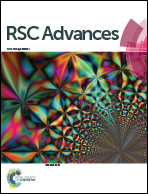Crosslinking of dialdehyde heparin: a new strategy for improving the anticoagulant properties of porcine acellular dermal matrix
Abstract
The anticoagulant properties of valve materials are essential to maintain blood patency after artificial valve implantation. Porcine acellular dermal matrix (pADM) has low immunogenicity, good biocompatibility, and can reduce calcification by eliminating heterogeneous cells. However, its main component is collagen, which has strong coagulation function and poor anticoagulant activity. When used in heart valve materials, it can easily coagulate and form a life-threatening thrombus. Therefore, it is necessary to improve its anticoagulant performance. The glutaraldehyde (GA) cross-linked valves widely used clinically are easy to calcify with poor anticoagulant performance and cytotoxicity. In this study, dialdehyde heparin containing cross-linking active aldehyde groups was prepared by sodium periodate oxidation, then it was used for crosslinking with pADM to chemically modify its anticoagulant performance. Compared with GA cross-linked pADM (GA-pA), dialdehyde heparin cross-linked pADM (OL-pA) has better thermal stability and biocompatibility, especially its anticoagulant and antiplatelet adhesion were significantly improved, which can reduce the incidence of coagulation, thrombocytopenia and bleeding. In summary, dialdehyde heparin is expected to be applied to modify the anticoagulant properties of pADM and has great potential for the preparation and clinical application of anticoagulant materials such as heart valves and artificial blood vessels.



 Please wait while we load your content...
Please wait while we load your content...